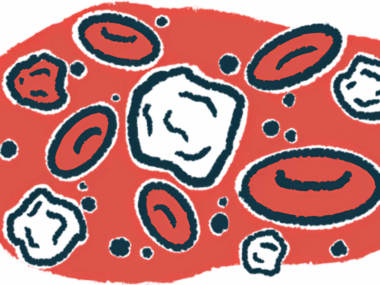MS cell-based therapy PTG-007 wins patent protection in China
Patent will cover treatment's administration via spinal canal injection
Written by |

Poltreg will receive a patent in China that covers the administration of its cell-based therapy PTG-007 for multiple sclerosis (MS) via an injection into the spinal canal, or intrathecally.
The method showed superior benefits compared with PTG-007’s intravenous infusion into the bloodstream in a Phase 1b/2a study of people with MS. Poltreg plans to launch two large studies this year to confirm the promising results.
“We are about to launch two new clinical studies with PTG-007 in patients with multiple sclerosis, so it is welcome news that China has issued us a patent for the intrathecal administration of the therapy,” Piotr Trzonkowski, MD, PhD, PolTREG’s CEO, said in a company press release.
MS is caused by an inflammatory attack that mistakenly targets and damages healthy parts of the brain and spinal cord. Several immune cell populations, including T-cells and B-cells, are implicated in the attacks.
PTG-007 is designed to ease MS disease activity and progression by reducing the activity of these immune cells. It contains a type of immune cell called regulatory T-cells, or Tregs, that are essential for keeping other immune cells in check, but are reduced or abnormal in MS. Tregs also play an important role in immune tolerance, the mechanism that normally prevents the immune system from attacking the body’s own tissues, which is also deficient in people with MS.
PTG-007 is made by collecting Tregs from a person’s own blood, which are then multiplied to millions in the lab and administered back into the patient. This enriched population of T-cells should reduce self-reactive immune attacks.
Testing cell-based therapy PTG-007
The therapy was first tested in MS in an open-label Phase 1b/2a trial that enrolled 14 people with the relapsing-remitting disease form. Participants were randomly assigned to PTG-007 via an infusion into the bloodstream (11 patients) at a dose of 40 million Tregs per kg of body weight, or an intrathecal injection (three patients) containing 1 million cells.
While both modes of administration were safe and no serious adverse events were reported, there was some evidence that the intrathecal injections resulted in better clinical outcomes. For example, five intravenous group patients had a total of 12 relapses and three had disability progression during the trial compared with none of the intrathecal group participants. These patients also had smaller increases in total lesion volume than the intravenous patients.
“This method has shown superior results to systemic administration in our earlier work in neurodegenerative diseases,” Trzonkowski said.
The upcoming Phase 2 trials, to be conducted in Poland, are expected to confirm the benefits in RRMS along with primary progressive MS (PPMS). A total of 105 patients will be enrolled, 60 with the progressive disease type. The trials’ main goals are to assess the treatment’s safety, as well as its efficacy in lowering the appearance of new or enlarging lesions.
Poltreg also is developing a type of engineered Tregs called chimeric antigen receptor (CAR) Tregs for RRMS and PPMS. In this approach, Tregs are also isolated from a patient, but they are then engineered to more specifically target problematic components of the immune system.
The company is certified to produce its Treg cell therapy candidate at its manufacturing facility, meaning it meets certain safety and quality standards and ensures every product batch produced will meet these standards.






